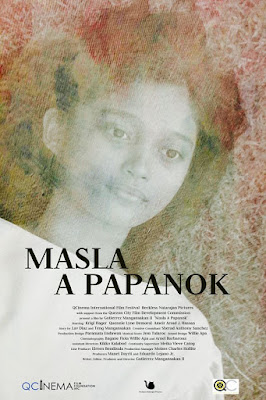The first "Halloween" film, written and directed by John Carpenter, was released in 1978. It starred Jamie Lee Curtis, who was chosen partly because she was the daughter of Janet Leigh of "Psycho." It had 8 sequels in all from 1981 to 2002 under various directors. It was rebooted by Rob Zombie in 2007 which had its own sequel in 2009. This year, prolific Blumstone Productions does a direct sequel of the original 1978 film.
In the first "Halloween" film, we first met Michael Myers as a six-year old who stabbed his older sister Judith to death in their home in Haddonfield, Illinois on Halloween, 1963. 15 years later, also on Halloween night, Michael (Nick Castle) escaped from the custody of his psychiatrist, Dr. Samuel Loomis (Donald Pleasance), and returned to his hometown to wreak bloody terror among uptight babysitter Laurie Strode (Jamie Lee Curtis) and her promiscuous friends Annie (Nancy Kyes) and Lynda (P.J. Soles).
For this current sequel, set 40 years after the events in the first film, Michael Myers (Nick Castle and James Jude Courtney) was being transported to another facility, this time under the care of Dr. Ranbir Sartain (Haluk Bilginer). Of course, he was able to escape again. He returned to his hometown of Haddonfield to seek out and confront his old nemesis Laurie Strode (Jamie Lee Curtis), who was now a grandmother who had estranged her daughter Karen (Judy Greer) and grand-daughter Allyson (Andi Matichak) with her PTSD-induced obsession against the bogeyman of her nightmares.
Poster of Halloween 1978
I was never a fan of slasher films, so I had not seen the original "Halloween" until I was planning to see this new sequel this week. By today's standards, the first "Halloween" was much simpler in the way John Carpenter created an atmosphere of dread and the ways Michael Myers killed his victims. There seemed to have been a message against promiscuity, in that it was the repressed virgin who survived in the end against the unkillable psycho. There was an eerie humor that pervaded the dread because of these elements.
In this sequel, Jamie Lee Curtis portrayed the elderly Laurie Strode (still sporting the same 1978 hairstyle) with an over-the-top sense of paranoia that led her to make her house a hyper-secure fortress. Laurie also inculcated this fear in her daughter and grand-daughter, for which they resented her all these years. With such a toxic psychological preoccupation, I was surprised Laurie even got married and had a family at all. I would have thought that her original trauma with Michael should have pushed her deeper into her sexual repression.
As expected, with all the special effects technology at hand, this current sequel had Michael killing his victims with more violent means to create bloodier, more disgusting murder scenarios. Since there was that perverse idea that pretty young people were more "fun" to kill in a slasher movie, Allyson's shallow gang of friends provided that fodder. Some attempts at comedy (like that bit by the dad about peanut butter) seemed uncalled for.
Aside from Curtis and Castle reprising their original roles, the babysitting scenes were a nice throwback reference to the original story. Carpenter's updated musical score worked well to enhance the tension. Director David Gordon Green still kept Michael obscure in the shadows. We never clearly see his face even if he was not masked. This was in keeping with how John Carpenter originally depicted his now-iconic bogeyman. Head to head, the 1978 "Halloween" is still the better slasher film for sentimental reasons, which is why the 2018 sequel had nostalgia in its favor.
"Halloween" 1978: 7/10.
"Halloween" 2018: 6/10.


























